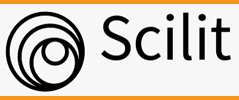PEMBELAJARAN LEARNING TRAJECTORY BERBASIS ETHNOMATHEMATICS
Abstract
Ethnomathematics is a culture-influenced or based form of mathematics. Ethnomathematics
have been studied and taught in a simple manner by taking the local culture. Trough the application of ethnomathematics in education, it is hoped thet students can better understand mathematics and their culture, so thet cultural values which are part of the character of the nation are embedded from an early age. Given the importance of sustainable education in terms of content and process, ethnomathematics -based learning trajectory is an important issue in mathematics learning. The process of making ethnomathematics -based learning trajectories does require a lot of time and effort. Learning trajectory consists of material, formal, normative and spiritual forms. Learning trajectory is in the form of material, its form is in the form of context and content where the usual context is in the form of artifacts (physically), a culture-based environment (for example ethnomathematic, namely culture-based mathematics). Developing ethnomathematics in the nuances of a learning trajectory means instilling and utilizing cultural values ​​contextually in learning mathematics with learning stages that are in accordance with the development of students' thinking processes, the methods students use, or the levels of thinking that students demonstrate. Thus it is hoped that students can more easily understand cultural-laden mathematical concepts.
References
Bishop, J.A. 1994. Cultural Conplicts in the Mathematics Education of Indigenous people. Clyton, Viktoria: Monash University.
Clements & Sarama. 2009. Learning trajectories in early mathematics – sequences of acquisition and teaching. Canada: Canadian Language &. Research.
D’Ambrosio, U. 2006. Preface. Prosiding, International Congress of Mathematics Education Copenhagen. Pisa: University of Pisa.
Fairhill, U., Trinick, T., Meaney, T. 2008. The Role of Language in Etnomatematika. The Journal of Mathematics and Culture June 2008, V3 (1) ISSN - 1558-5336.
Gerdes, P. 1996. “Ethnomathematics and Mathematics Educationâ€, dalam International. Handbook of. Mathematics. Education. Dordrecht: Kluwer Academic
Hiebert, J. & Carpenter P. T. 1992. Learning and Teaching with Understanding. Handbook of Research on Mathematics Teaching and Learning. (h. 65 – 100). New York: Macmillan Publishing Company.
Pinxten. 1994. Ethnomathematics and Its Practice: For the Leraning of Mathematics, Vol 14 no. 2
Suardipa, I. P., & Pitriani, K. 2020. Urgensi Sistem Penjaminan Mutu Dan Akreditasi Dalam Pemetaan Mutu Satuan Pendidikan. PINTU: Jurnal Penjaminan Mutu, 1(2).
Suherman, Erman dkk. 2003. Strategi Pembelajaran Matematika Kontemporer. Bandung: PT Remaja Rosdakarya.Â
Zhang, W. & Zhang, Q. 2010. Ethnomathematics and its integration within the mathematicscurriculum. Journal of Mathematics Education. 3(1), pp. 151-157.












